1. Varieties of apricots for the Moscow region and the middle zone.
2. The best early varieties of apricots.
3. Medium varieties of apricots.
4. Late varieties.
5. Varieties of black apricots.
6. Columnar varieties of apricots.
The best varieties of apricots for the Moscow region and the middle zone
Apricot is a traditionally southern crop, but thanks to the efforts of domestic breeders, it is successfully grown in the difficult climatic conditions of the Moscow region and the middle zone. It is worth purchasing apricot varieties zoned for these places, which have high winter hardiness and self-fertility, as well as the ability to survive possible thaws and spring frosts without much loss. We offer an overview of the most popular types of apricots.
"Lel"
“Lel” is a variety with very early fruit ripening and is self-fertile. The yield is small, but if other types of apricots are grown nearby, the fruit harvest will increase.
- Average yields are about 20 kg per tree.
- Orange fruits weighing 20 g. excellent taste with an easily separated pit. The time to ripen is the end of July.
- Spreading trees up to 3 m tall.
- The first harvests are produced in the third or fourth year after planting the seedling.
- Tolerates frosts down to -30. Suitable for cultivation in the Central region.
- Susceptibility to diseases and pests is average.
Varietal advantages: excellent taste of fruits, early ripening, good transportability, decent winter hardiness of bark and buds.
Minuses: small fruit size, large stone, can be damaged by clasterosporia and aphids without preventive measures.
"Tsarsky"
“Tsarskiy” is an early-ripening, self-fertile species that produces stable but small yields.
- Average yields are 20-30 kg per tree.
- The fruits are yellow with a ruddy side, weighing up to 20 g with sweet and sour juicy pulp, ripen in early August.
- The tree is moderately tall, 3-4 m.
- In the third or fourth year after planting, the seedlings begin to bear fruit.
- Winter hardiness is strong (up to -40). Successfully grown in the Moscow region and the middle zone.
- Good resistance to major diseases and requires protection from pests.
Varietal advantages: early ripening, self-fertile, highly winter-hardy.
Minuses: small fruits, low yield, the stone is difficult to separate from the pulp.
"Aquarius"
“Aquarius” is a high-yielding, self-fertile, mid-season apricot variety.
- The regular yield is high, 50-60 kg per tree.
- Yellow and blush fruits weighing 25-30 g with tender juicy pulp, ripen in mid-August.
- The tree grows up to 5-6 m in height.
- It begins to bear fruit in the third or fourth year.
- Frost resistance is excellent. The variety is zoned for planting in the Central region.
- Resistance to diseases and pests is satisfactory.
Varietal advantages: high-yielding, self-fertile, frost-resistant, easy to separate the stone from the pulp.
Minuses: large tree growth complicates care and harvesting.
"Russian"
“Russian” is remarkable for its early fruit ripening and high yield.
- Harvests are abundant up to 80 kg per tree.
- Yellow-orange fruits weighing 50-60 g with tasty juicy pulp. The time to ripen is the end of July.
- Tree 3-4 m high.
- The first harvest can be obtained in the fifth year of growth.
- Winter-hardy, withstands frosts down to -30. Suitable for growing in the Moscow region and central regions.
- Susceptibility to diseases is average.
Varietal advantages: early ripening, abundant harvests, large fruits, high winter hardiness.
Minuses: average disease resistance.
"Hardy"
“Hardy” - has very good winter hardiness of wood and buds. The species is self-fertile and productive.
- The yield is 60 kg per tree.
- Orange fruits with a reddish barrel weighing 40 g with aromatic sweet pulp.The harvest ripens in the first half of August.
- The trees are vigorous, 5 m tall.
- The first harvests are produced in the fifth or sixth year after planting the seedling.
- Tolerates severe frosts well. Successfully grown in the Moscow region and central Russia.
- Disease resistance is satisfactory.
Varietal advantages: excellent winter hardiness, stable high yields, self-fertility.
Minuses: The tallness of the tree complicates care and harvesting.
"Honey"
Apricot “Honey” has high frost resistance, good yield, but is self-sterile and needs pollinating neighbors.
- Brings yields of 15-20 kg per tree.
- The fruits are golden-yellow with reddish specks, weighing 15 g, with delicate sweet pulp, ripening in the first half of August.
- Spreading tree about 4 m tall.
- The first fruiting occurs in the third or fourth year.
- Calmly withstands frosts down to -35 and above. Suitable for planting in the Moscow region and central Russia.
- Resistance to diseases and pests is low. Needs protective measures.
Varietal advantages: high winter hardiness, early fruiting, excellent taste of fruits, easy removal of seeds.
Minuses: small fruits, self-sterility, low resistance to diseases and pests.
The best early varieties of apricots
"Triumph Northern"
An early ripening variety, self-fertile with excellent yield and winter hardiness.
- The yield reaches 60 kg/per tree.
- The fruits are yellow-orange weighing 50 g with delicate sweet pulp. Ripening in early August.
- Spreading tree 4 m high.
- It begins to bear fruit in the fifth year of growth.
- Winter hardiness is excellent. Can be grown in the Central Black Earth Zone, Siberia, and the Urals.
- High resistance to major diseases.
Varietal advantages: productive, self-fertile, early ripening, frost-resistant.
Minuses: Fruiting is unstable, buds have average winter hardiness.
"Khabarovsky"
"Khabarovsky" is a variety of apricot with early ripening, stable yield and self-fertility.
- Annual yields are high: 35 kg per tree.
- Light yellow fruits with a slight blush weighing 30 g with dense sweet and sour pulp, ripen at the end of July.
- Spreading, tall tree 4-5 m.
- In the fourth or fifth year, the tree produces its first harvest.
- Winter hardiness is at an average level. The variety is recommended for Primorsky and Khabarovsk territories.
- Relatively resistant to major diseases.
Varietal advantages: early ripening, self-fertile, large tasty fruits, high yield.
Minuses: average winter hardiness, low transportability, can be damaged by the codling moth.
"Pineapple"
The Pineapple variety is characterized by self-fertility and high yield.
- Harvests amount to 50 kg, and sometimes up to 120 kg in good years.
- The fruits are yellow, large, weighing 35-45 g with aromatic sweet pulp. The time to ripen is the second half of July.
- Tree of medium height up to 4 m with a dense crown.
- Fruiting begins in the third or fourth year after planting the seedling.
- Winter hardiness is low (up to -25). Grown in areas with a temperate warm climate.
- Good disease resistance.
Varietal advantages: self-pollinating, highly productive, drought-resistant, tasty fruits of universal use.
Minuses: Average frost resistance; when ripe, apricots quickly fall off the branches if harvesting is delayed.
"Champion of the North"
“Champion of the North” is an early-ripening variety that produces good yields and is self-fertile.
- The yield is 18-25 kg per tree.
- The fruits are orange with a blush, weighing 30-60 g, with sweet and sour pulp and an easily separated seed. The kernel of the seed is sweet. Ripening time is the end of July.
- A tree of strong growth with a sparse crown.
- The first harvest comes in the fourth year after planting.
- High winter hardiness allows this species to be successfully grown in the Central Black Earth region.
- Resistance to diseases and pests is good, but preventative measures are necessary for protection.
Varietal advantages: high frost resistance, self-fertility, early fruiting, good transportability.
Minuses: insufficiently juicy pulp, susceptible to clasterosporia blight in rainy summers.
The best medium varieties of apricots
"Red-cheeked"
“Red-cheeked” is one of the most common apricot varieties, unpretentious, productive and self-fertile.
- Brings abundant harvests of up to 90 kg per tree.
- The fruits are orange with a bright blush, weighing 40-50 g with aromatic sweet and sour pulp. The bone comes off easily.
- Tree up to 4 m tall with a spreading crown.
- The first harvest is harvested in the third or fourth year after planting the seedling.
- Winter hardiness is satisfactory. Recommended for planting in the North Caucasus and Lower Volga regions.
- Disease resistance is relative.
Varietal advantages: self-pollinating, early fruiting, high-yielding, large fruits of excellent taste.
Minuses: When overripe, apricots quickly crumble and require protective measures against diseases.
"Son of Red-Cheeked"
“Son of the Red-cheeked” is self-pollinating, mid-season, producing good harvests.
- Harvest weight 30 kg per tree.
- The fruits are orange with a thick blush, weighing 35-55 g, sweet and sour, juicy, ripen at the end of July.
- The tree is tall with a dense crown.
- The first harvest is obtained in the fourth year.
- Frost resistance is quite good. It is grown successfully in the Lower Volga region.
- Disease resistance is good, but prevention is necessary.
Varietal advantages: self-fertile, late flowering avoids freezing by return frosts, fruits have a wonderful taste with an easily separated seed.
Minuses: does not tolerate thaws, after which the fruit buds freeze; the thickened crown needs annual thinning.
"Kichiginsky"
“Kichiginsky” is a frost-resistant, mid-season, self-sterile species. For cross-pollination, other varieties of apricots need to be planted on the site.
- The yield is 15 kg per tree.
- The fruits are small yellow, weighing 15 g, with aromatic, sweet and sour pulp, easily separated by the seed. The time to ripen is the first half of August.
- A tree of moderate growth with a sparse crown.
- Fruiting begins in the fifth year after planting.
- Tolerates severe frosts very well. "Kichiginsky" is recommended for cultivation in the Ural region.
- Immune to major diseases of stone fruit crops.
Varietal advantages: high winter hardiness, stable yield, good transportability.
Minuses: small fruits, self-sterility.
"Dessert"
“Dessertny” is an excellent variety for the middle zone, with early ripening and abundant yield, self-pollinating.
- Harvesting from one plant reaches 50 kg.
- The fruits are light yellow, weighing 30 g. The pulp is sweet with a pleasant sourness. The fruits ripen at the end of July.
- The apricot tree grows about 5 m.
- The first fruits are obtained in the fourth year after planting.
- Winter hardiness is high. Recommended for cultivation in the Central Black Earth region.
- Immunity to diseases is decent.
Varietal advantages: excellent frost resistance, self-fertility, abundant yield.
Minuses: a powerful spreading tree makes it difficult to care for and harvest.
"Countess"
“Countess” is a variety with good winter hardiness and productivity, but requires cross-pollination.
- 20-30 kg of fruits are collected from the tree.
- The fruits are yellow with a reddish barrel, weighing 25 g, juicy and sweet. Harvesting ripened fruits in mid-August.
- Powerful tree 5-6 m high.
- Fruiting begins in the third or fourth year after planting.
- Withstands severe frosts down to -30 without noticeable freezing. "Countess" grows well in the Moscow region and the middle zone.
- In rainy, cold summers it suffers from fungal diseases, especially damaged by clusterosporiasis.
Varietal advantages: excellent winter hardiness and productivity, excellent taste and keeping quality of fruits, early fruiting.
Minuses: Self-sterile, the very tall tree makes it difficult to care for and collect fruit.
The best late varieties of apricots
"Monastic"
“Monastyrsky” is a late-ripening, self-pollinating, frost-resistant variety.
- The yield is 20-25 kg per plant.
- Apricots are orange with a reddish barrel, weighing 30-40 g. The taste is sweet and sour, the pulp is juicy. Ripening time is the second half of August.
- The tree is tall, spreading, 5 m tall.
- It begins to bear fruit in the fifth year after planting.
- It tolerates frosty winters of the Moscow region very well. Recommended for growing in the middle zone.
- Immunity to diseases and pests is significant.
Varietal advantages: excellent winter hardiness, self-fertility, tasty fruits with good transportability.
Minuses: tall trees, due to late ripening in cold summers, the fruits do not have time to ripen.
"Favorite"
“Favorit” is a late-ripening type of apricot, self-pollinating, with excellent winter hardiness, producing stable, good yields.
- The fruit harvest is about 20 kg.
- Apricots are orange with a thick blush, weighing 30 g, and have a sweet and sour taste. Fruit picking in the second half of August.
- Tree 3-4 m high with a wide crown.
- The period of fruiting begins in the third or fourth year.
- High resistance to severe frosts. Successfully grown in the Central region.
- Slightly damaged by diseases.
Varietal advantages: self-fertile, winter-hardy, early fruiting, tasty fruits of universal use, the stone is easily separated from the pulp.
Minuses: late ripening period; in cold summers the fruits do not have time to ripen.
Varieties of black apricots.
Black apricot is a hybrid of cherry plum and apricot. This variety has a number of advantages: late flowering helps to avoid damage to flower buds by spring frosts, trees are of moderate growth, and high resistance to fungal diseases of stone fruits. Varieties of black apricot with high winter hardiness and self-fertility have been developed.
"Black Velvet"
“Black Velvet” is a variety of black apricot with annual yield and high winter hardiness. The variety is partially self-fertile. For cross-pollination, cherry plum or other apricot varieties are suitable.
- Productivity is average, but regular.
- The fruits are dark purple weighing 25-30 g with aromatic sweet and sour pulp. The bone comes off well. The time to ripen is the end of July.
- The tree is medium-sized with a neat crown.
- It begins to bear fruit in the fourth year.
- Frost resistance is satisfactory. “Black Velvet” is zoned in the North Caucasus region.
- Virtually immune to fungal diseases.
Varietal advantages: frost-resistant, annual yield, good transportability and shelf life of apricots, excellent disease resistance.
Minuses: small fruit size, partially self-pollinating.
"Black Prince"
“Black Prince” is a type of black apricot with annual yield and large fruits. It is self-fertile.
- The average yield is 10-15 kg, in favorable years up to 30 kg per tree.
- The fruits are dark burgundy weighing 60-80 g with tasty juicy pulp. Ripening time is the first half of August.
- The tree is medium-sized 3-4 m with a neat crown.
- Winter hardiness is good, fruit buds are not damaged by spring frosts. Recommended for planting in the North Caucasus region.
- It has high resistance to major fungal diseases.
Varietal advantages: large-fruited, stable yield, high immunity, self-fertile.
Minuses: poor transportability, apricots fall off en masse when ripe, it is better to collect them unripe.
"Kuban black"
“Kuban Black” is a frost-resistant, medium-yielding, self-sterile variety. Cherry plum and other apricot varieties are suitable for cross-pollination.
- Productivity is average (76 c/ha) and irregular.
- The fruits are burgundy-purple, weighing 25-35 g, sweet and sour with a pleasant aroma, ripen at the end of July.
- The tree is tall, the crown is dense.
- The first harvests can be obtained in the third year after planting the seedling.
- Frost resistance is quite good. “Kuban Black” is zoned in the North Caucasus region.
- Excellent disease resistance.
Varietal advantages: winter-hardy, tasty fruits of universal use, good transportability, high immunity.
Minuses: vigorous trees are difficult to care for and are self-sterile.
Columnar apricot varieties
Columnar apricot has a straight, strong trunk with short side shoots that form a compact crown in the form of a column. Trees of columnar apricot varieties are small, 2-2.5 m tall, take up little space and are very decorative. An important point when growing such species is the annual crown-forming pruning of the young tree as it grows. Columnar apricots are increasingly becoming popular among amateur gardeners.
"Prince March"
“Prince March” is a columnar apricot with good yield, self-fertile and quite winter-hardy.
• Productivity is quite high.
• Apricots are bright orange with a ruddy side, weighing 30-60 g. The pulp is juicy, sweet with an easily separated stone. Ripening time is early August.
• Low tree 2 m with a columnar crown.
• The first harvest occurs in the second or third year after planting the seedling.
• High winter hardiness, tolerates frosts down to -30. Grown in regions with warm climates. It is possible to grow in the middle zone with proper care.
• Excellent resistance to diseases and pests.
Varietal advantages: low-growing compact tree easy to care for and harvest, self-fertile, early fruiting, tasty apricots for universal use.
Minuses: due to early flowering, flower buds may be damaged by spring frosts; it requires annual formative pruning.
"Star"
“Star” is a variety of columnar apricot with excellent winter hardiness and large fruits. The variety is self-pollinating.
- Productivity is high.
- The fruits are bright yellow, weighing 40 g, sometimes up to 100 g. The pulp is very tasty and aromatic. Ripening period is the first half of August.
- The tree is low with a neat columnar crown.
- It begins to bear fruit in the third year after planting.
- Frost resistance up to -30. It is possible to grow in the middle zone with the necessary care.
- Resistant to major diseases of stone fruit crops.
Varietal advantages: low-growing tree, large fruits of universal use, self-fertility and early fruitfulness.
Minuses: mandatory annual pruning, early flowering.
On a note: A common problem when growing apricots is that the bark becomes warm. Experienced gardeners advise purchasing seedlings grafted onto the rootstock of frost-resistant, non-ripening varieties of cherry plums, plums and damsons.
It is better to plant several different varieties of apricot to ensure abundant annual harvests.
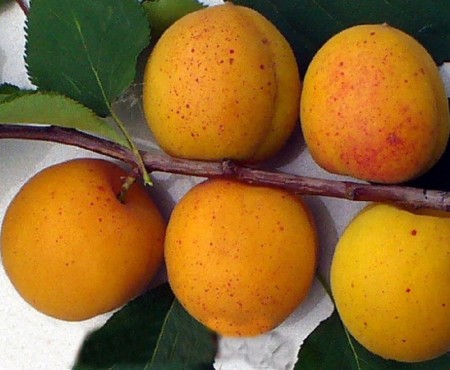
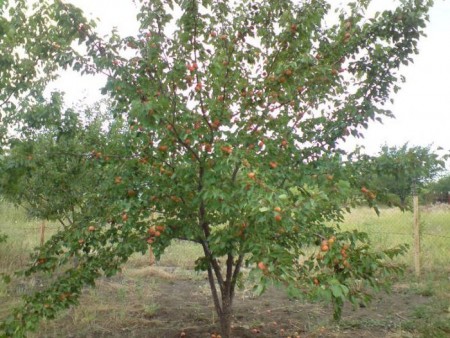
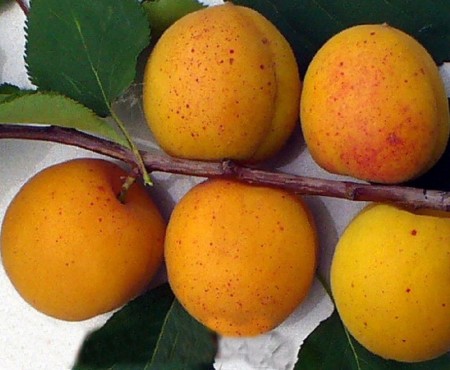

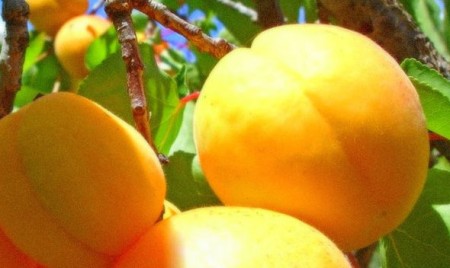
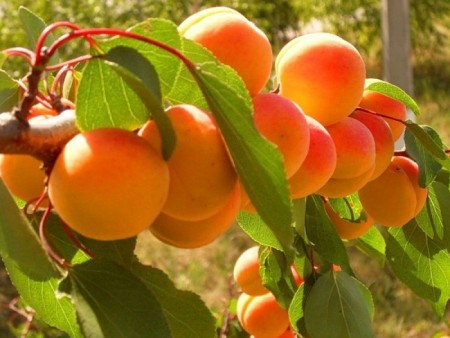
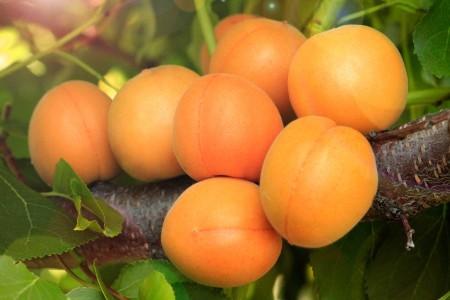
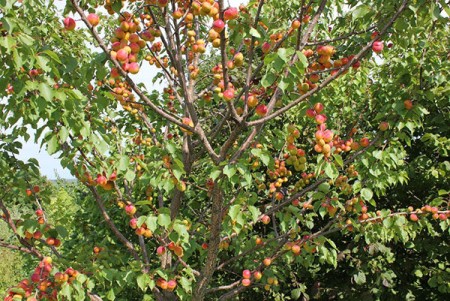
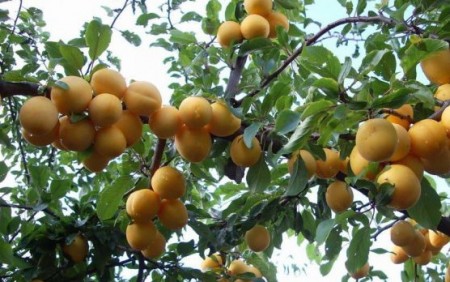
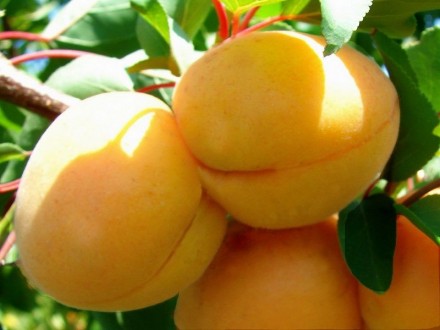
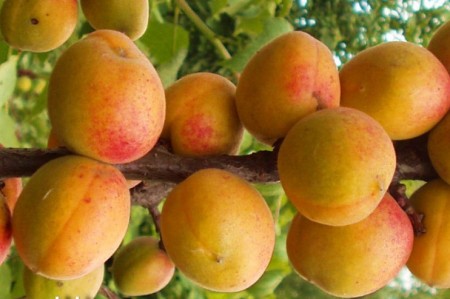
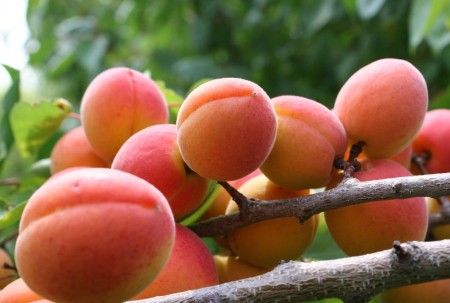
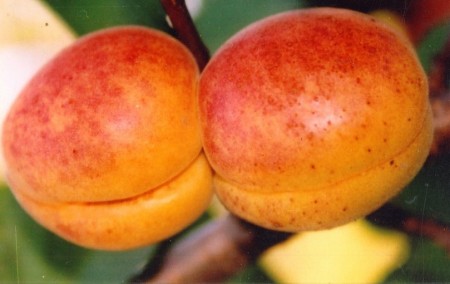
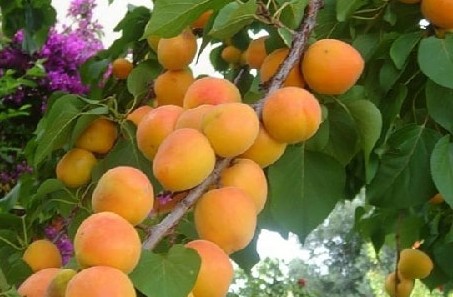

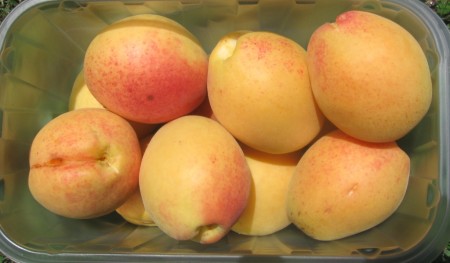
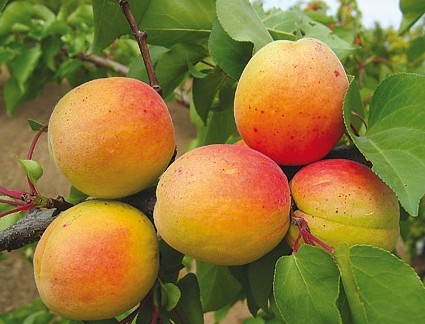
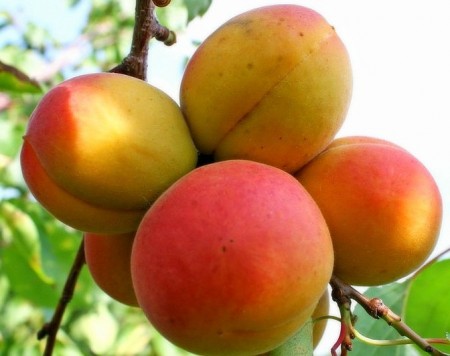
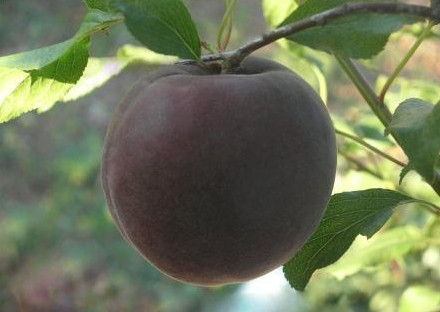
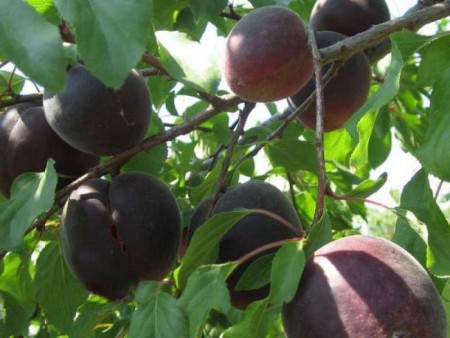
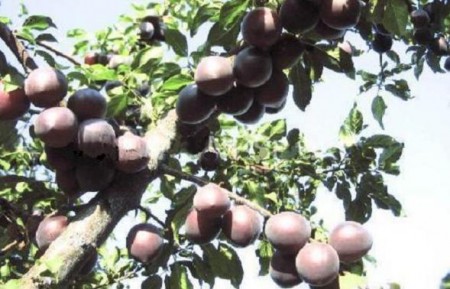
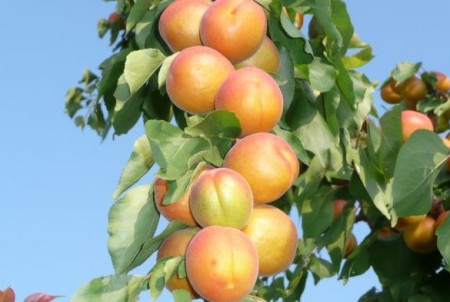
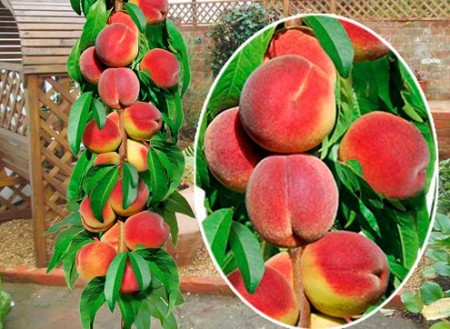



 CUCUMBERS NEVER GET SICK, I'VE BEEN USING ONLY THIS FOR 40 YEARS! I SHARE A SECRET WITH YOU, CUCUMBERS ARE LIKE THE PICTURE!
CUCUMBERS NEVER GET SICK, I'VE BEEN USING ONLY THIS FOR 40 YEARS! I SHARE A SECRET WITH YOU, CUCUMBERS ARE LIKE THE PICTURE! You can dig a bucket of potatoes from each bush. Do you think these are fairy tales? Watch the video
You can dig a bucket of potatoes from each bush. Do you think these are fairy tales? Watch the video
 How our fellow gardeners work in Korea. There is a lot to learn and just fun to watch.
How our fellow gardeners work in Korea. There is a lot to learn and just fun to watch. Eye trainer. The author claims that with daily viewing, vision is restored.They don't charge money for views.
Eye trainer. The author claims that with daily viewing, vision is restored.They don't charge money for views. A 3-ingredient cake recipe in 30 minutes is better than Napoleon. Simple and very tasty.
A 3-ingredient cake recipe in 30 minutes is better than Napoleon. Simple and very tasty. Therapeutic exercises for cervical osteochondrosis. A complete set of exercises.
Therapeutic exercises for cervical osteochondrosis. A complete set of exercises. Which indoor plants match your zodiac sign?
Which indoor plants match your zodiac sign? What about them? Excursion to German dachas.
What about them? Excursion to German dachas.